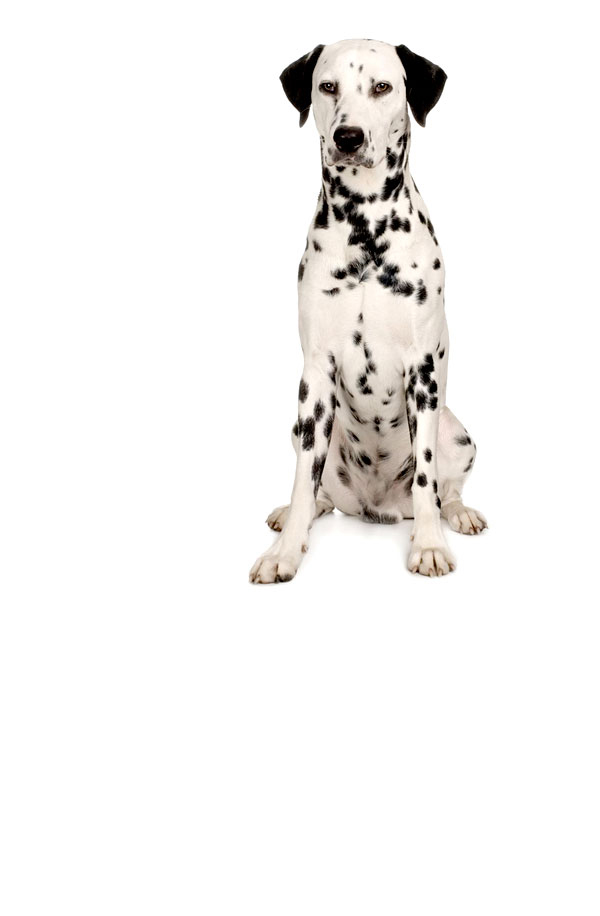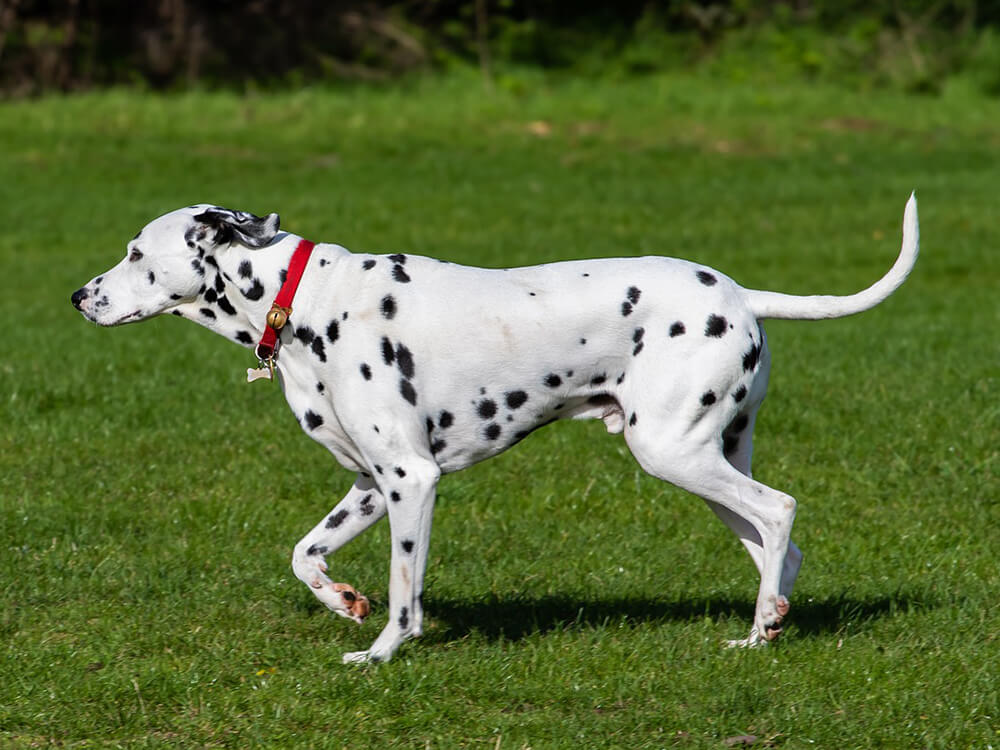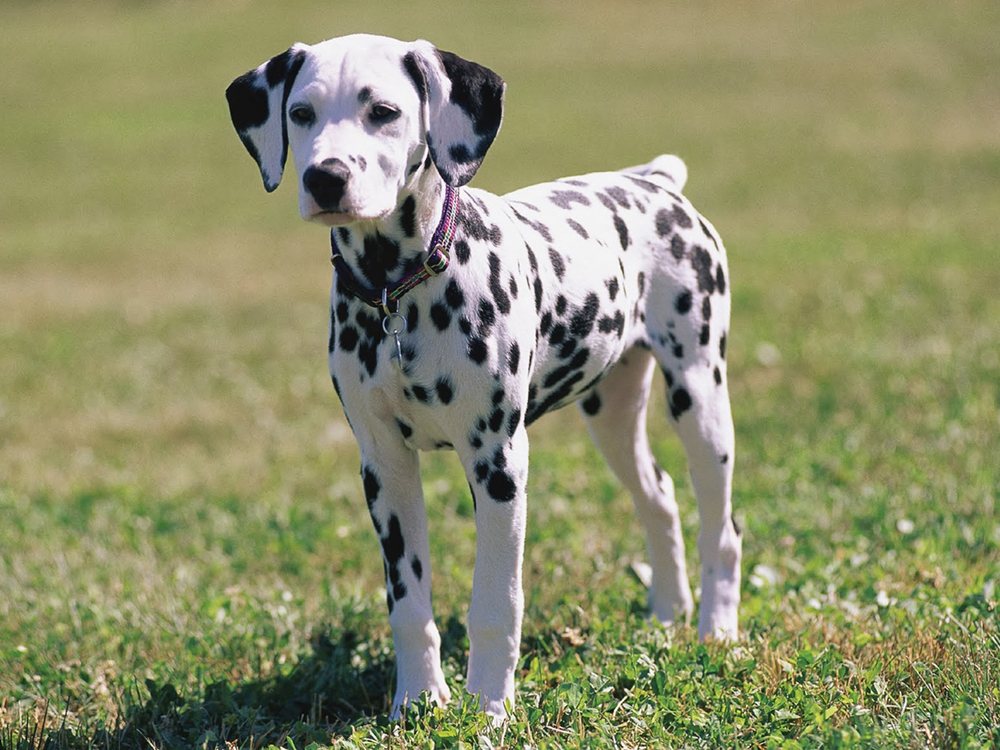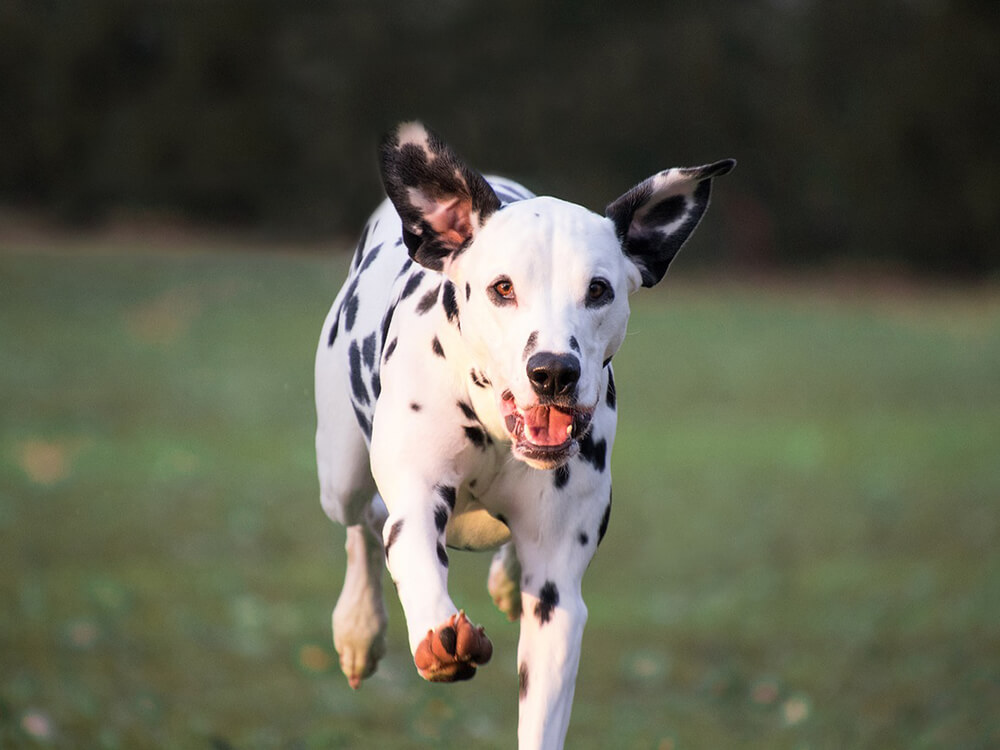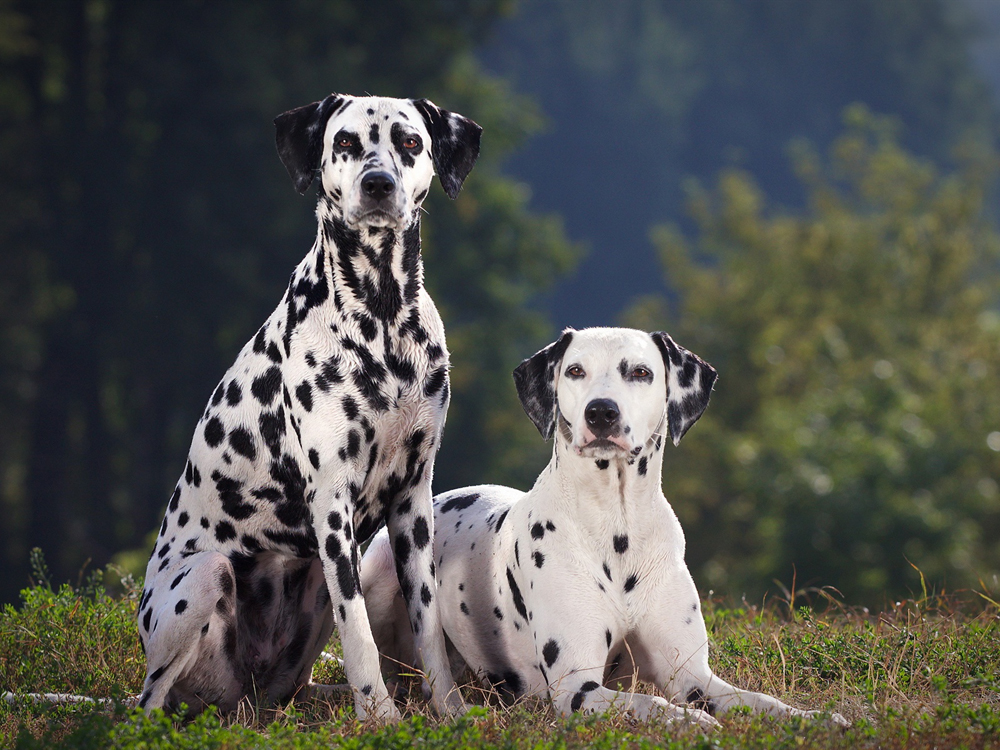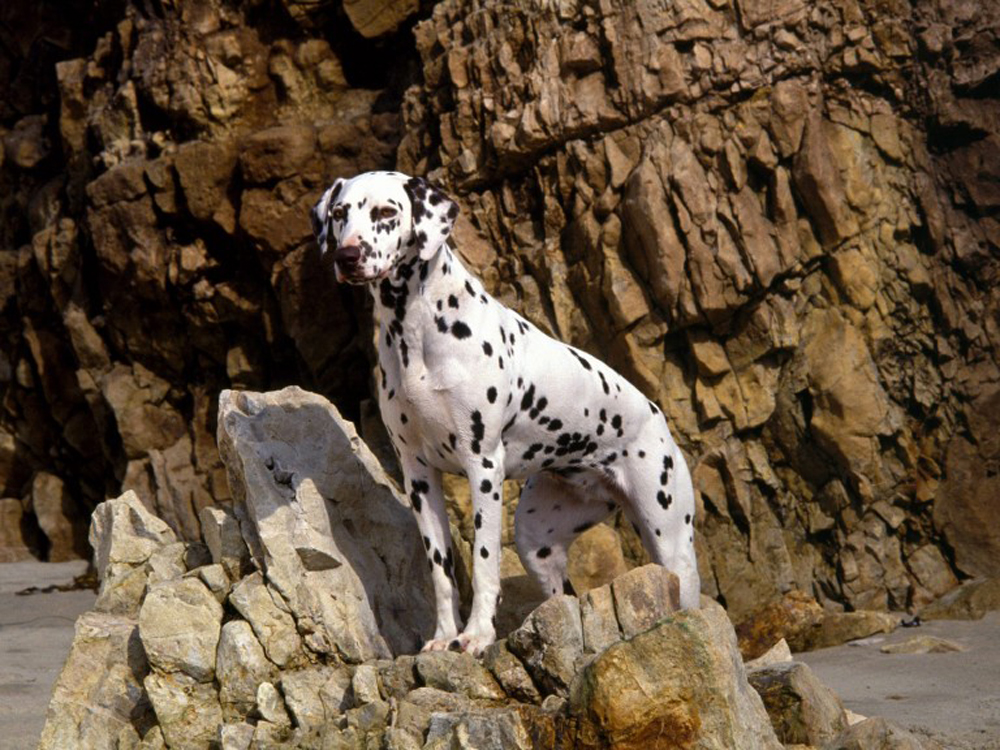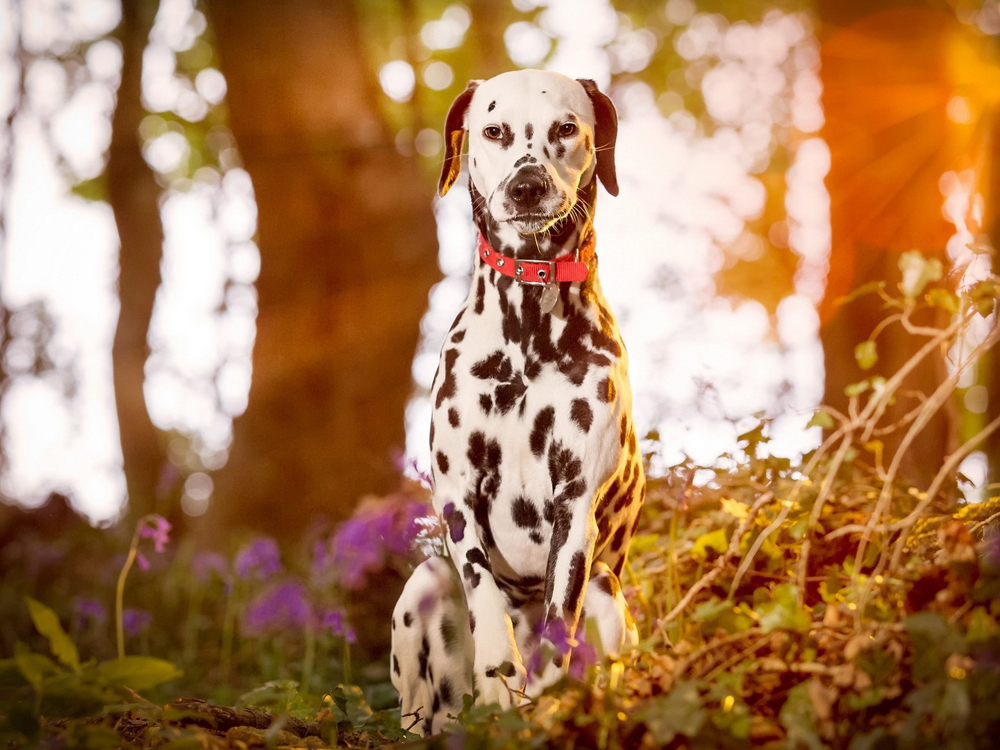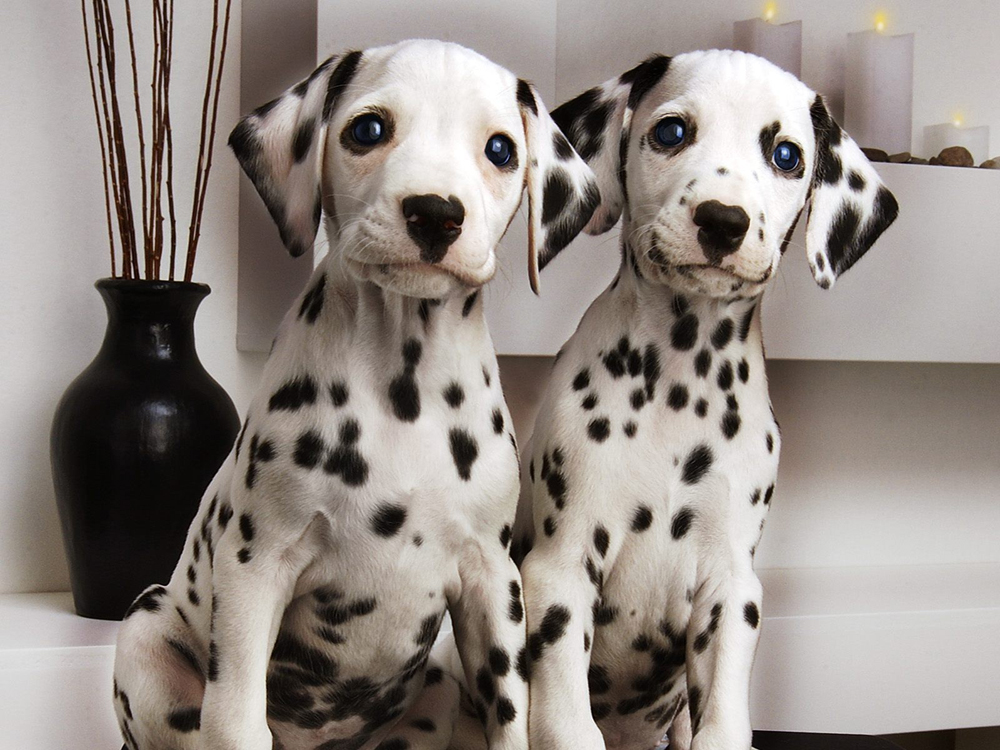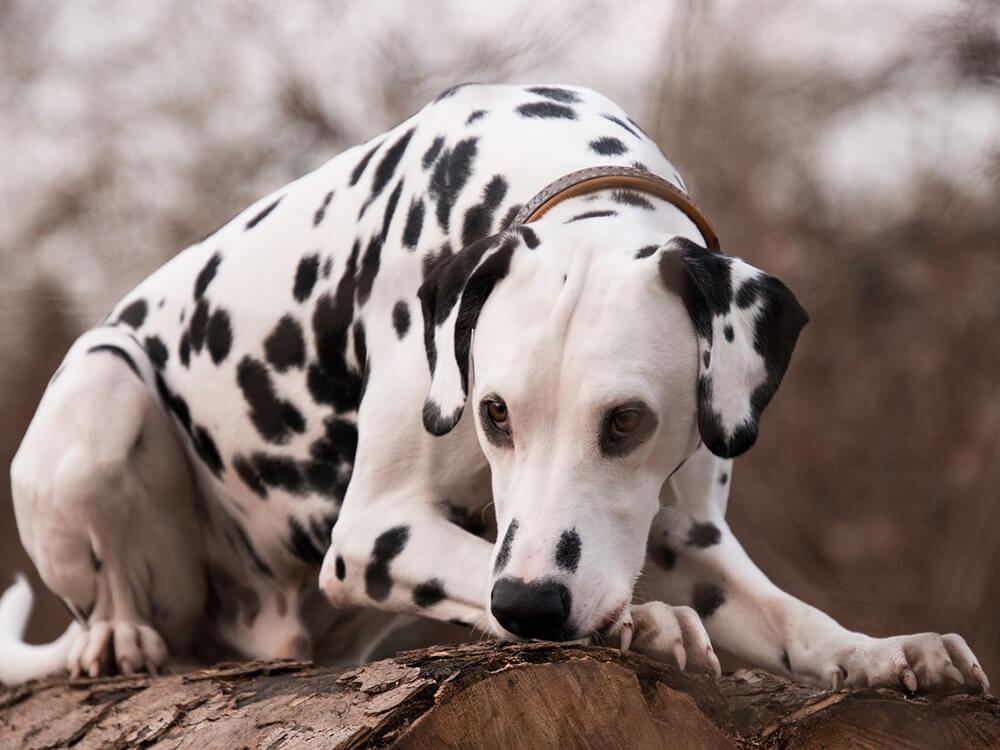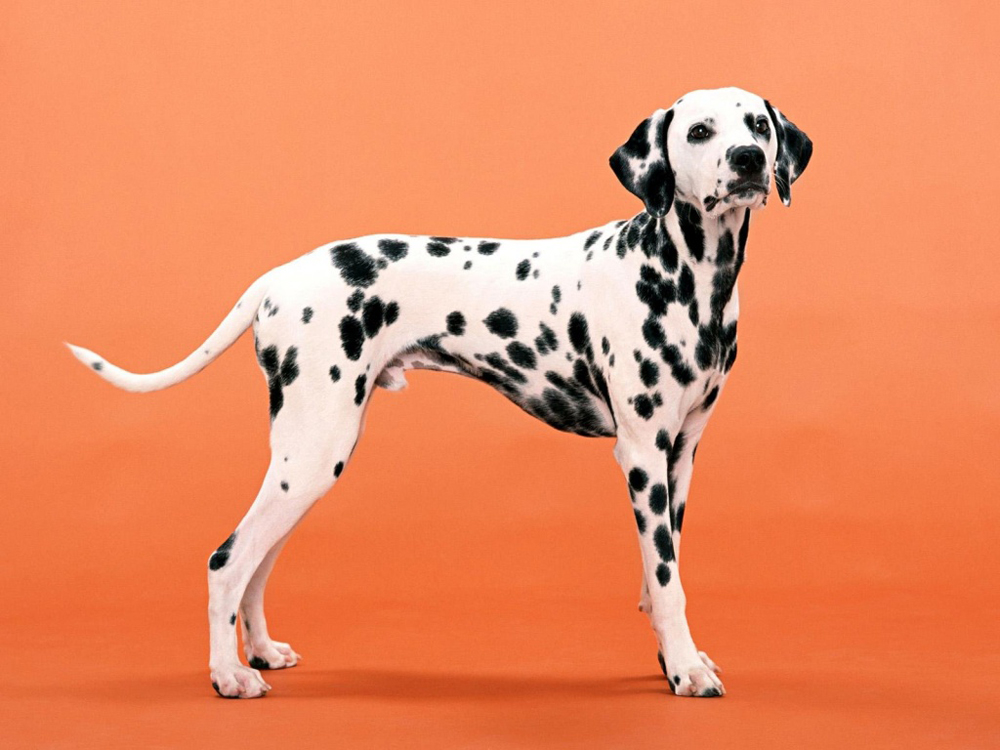
Dalmatian Breed Pictures
Vital Breed Stats
| Height: | 60 - 68 cm M | 48 - 60 cm F |
| Weight: | 29 - 31 kg M | 20 - 29 kg F |
| Breed Group: | Terrier Dog Group |
| Life Expectancy: | 15 - 18 years |
| KC Registered: | No |
Breed Characteristics
| Size: |  |
| Grooming: |  |
| Exercise Level: |  |
| Trainability: |  |
| Barking Level: |  |
| Good with Children: |  |
| Good with other pets: |  |
| Affectionate: |  |
| Protective: |  |
| Cost to Keep: |  |
Give a thumbs up if you love the Dalmatian

0
More About the Breed
History
The origin of the Dalmatian is a mystery. Its name is said to be derived from the now-extinct hound dog named Dama-chien. While other stories suggest that the name was obtained from a province on the eastern shore of the Adriatic Sea called Dalmatia (now Croatia), presumably its place of origin. One thing is sure about Dalmatians is that they were bred to work. They were utilised as guard dogs, shepherds, retrievers, ratters, circus dogs, and coaching dogs.
In the 19th century, Dalmatians were widely known as "the Spotted Dog Coach" as they are seen to run alongside horse-drawn carriages of the English nobility thanks to their excellent stamina. They also guarded the horses and the coach when they were at rest.
Today, Dalmatians are favourite family companions. Because of their high affinity with horses, they are also used as firehouse dogs, running with the horses to the fire and sometimes helping rescue people from burning buildings.
Appearance
The Dalmatian is a fine-looking, muscular and medium-sized dog. It has incredible endurance and stamina. It weighs 48 to 55 pounds and stands 56 to 61 centimetres at the withers. This active and robust dog has a relatively long and flat head that is well-defined with a moderate stop and no loose skin. Dalmatians’ eyes are medium-sized that are either dark in black spotted dogs or amber in liver spotted dogs. Ears are also modest in size and set high with broken markings or preferably spotted. Their jaws are strong, necks fairly long, and backs level with well-defined withers and well-sprung ribs.
The highly-prized Dalmatian coat is smooth to touch with a texture of fine satin. The base colours should be white with either black- or liver-coloured round spots.
Grooming
The Dalmatian spots being its distinct feature should be well distributed as much as possible. It sheds considerably year-round, so weekly grooming is recommended. The Dalmatian produces a minimal amount of oil in their coats and lacks the "doggie smell" so it stays clean compared to other dog breeds.
Other than coat grooming, don't forget to brush the Dalmatian's teeth at least twice a week to avoid bad breath and gum disease. Clean its ears as well to save your dog from the discomfort of a potential infection and save you the cost of treatment. Make sure to use a veterinarian-approved solution in cleaning your Dal's ears. You should also regularly trim its nails to avoid painful overgrowth.
Temperament
Intelligence
In spite of being a hyperactive dog, Dals are ideal for first-time owners provided that they are given the right amount of mental stimulation and physical exercise. Dalmatians are excellent watchdogs as they are naturally alert, curious and interested in everything that goes around them. They are generally good around children since they are gentle dogs by nature. Being energetic dogs, interaction or play may become a bit rough, so supervision is a must.
As for other pets, Dals rarely show dominance and aggression toward other dogs if they have been well socialised at a young age. Care must be taken especially for small unknown pets. Dalmatians are bred to be hunters so they will want to chase the neighbours' cats and other small furry pets if given a chance.
Nutrition
- Senior and less active: up to 1,170 calories daily
- Typical adults: up to 1,310 calories daily
- Physically active/working dogs: up to 1,460 calories daily
Feeding
Health
Exercise
Cost of Ownership
When you raise a dog, it usually comes with a vision of fun and happy days but that won't last long if the road ahead is paved with financial difficulties. The first lesson to responsible dog ownership is to make sure you are capable of raising a dog, financially. For one, if you plan to buy a Dalmatian puppy, prepare to pay around £500 to £700 for a well-bred one. Getting a pet insurance is another matter, which will cost you somewhere in between £23 and £48, depending on the level of coverage.
Dalmatians need health care as much as they need your tender loving care. This means not to neglect veterinary visits for reasons such as lack of money or time. Health issues that are left unattended may cost you more time and money than it should have. So yes, veterinary consultations including initial vaccinations, boosters and spaying (when the time is right) is important and will cost you around £1,000 annually.
Other expenses are the bare necessities, which most people consider first when they decide to get a dog. These include dog supplies such as leash, bed, collar, bowl, and toys which you may have to shell out £200 depending on the quality and brand. Don't forget about the food. Food for Dals cost around £40 to £60 a month.
Is a Dalmatian Right for You?
- The Dalmatian is a hyperactive dog with high exercise needs.
- It is a fine-looking dog with a spotted coat as its unique feature.
- The Dalmatian is loyal, affectionate and gentle by nature.
- This breed is ideal for first-time dog owners as it is a people-pleaser and easy to train.
- The Dalmatian loves the outdoors and will need at least two hours' worth of exercise daily.
- It can't digest well dense or heavy proteins like organ meat (else they suffer from kidney stones).
